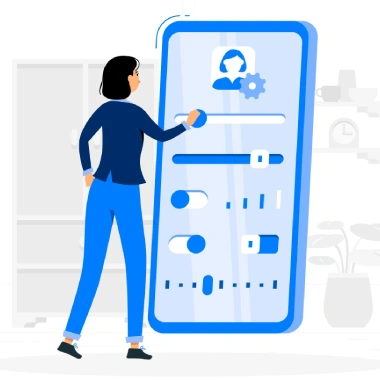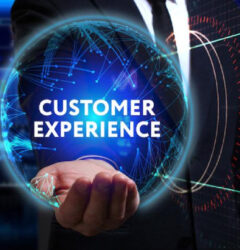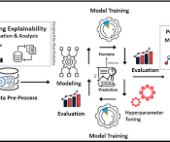Understanding Personalization in Marketing
At its core, personalization can be categorized into two main aspects: personalization for marketing and personalization for communication. This insight will delve into the realm of personalization for marketing, with a forthcoming discussion on personalization for communication.
Thank you for reading this post, don't forget to subscribe!Marketing personalization is a strategy that uses data to target and retarget leads with a branded message that speak directly to specific customers’ interests, demographics, and known buying behavior. Marketing personalization is becoming increasingly expected by consumers.
Customer Expectations
Beyond meeting customer expectations, there’s a compelling business incentive behind utilizing personalization. When a significant portion of revenue (50%) stems from the top 10% of customers, and 90% of revenue originates from the top 20%, the imperative becomes clear—to retain and find more customers like the top performers. Personalization emerges as a potent tool, enabling the creation of tailored experiences that resonate with customers on an individual level, fostering enduring relationships with your brand.
While the buzz around personalization might suggest it as the ultimate goal, it’s crucial to recognize it as an important means to an end. At its fundamental level, personalization involves utilizing customer data to make interactions more pertinent to them. Achieving personalization at scale requires a comprehensive understanding of all aspects related to your customers.
Everywhere one looks, brands are embracing personalization, be it in targeted social media ads or the personalized greetings from the local coffee shop barista. Customers now expect personalized experiences, and recent technological advancements have expanded the horizons of where and how personalization can be implemented.
Whether it’s through social media, website interactions, or email communication, audiences anticipate personalized experiences that make them feel valued. In a study, 71% of consumers expressed the expectation of personalized interactions, and 76% admitted frustration when this expectation isn’t met.
Incorporating personalization into your marketing strategy is not just a trend but a necessity for enhancing customer engagement and driving conversions. Before delving into its implementation, understanding what marketing personalization entails is vital.
What is Marketing Personalization?
Marketing personalization is a strategic approach that leverages data to target and retarget leads with brand messages tailored to specific customers’ interests, demographics, and buying behavior. The goal is to make customers feel that the brand message is crafted exclusively for them, often referred to as one-to-one or individual marketing.
Notable companies like Netflix, Amazon, and YouTube employ personalization through algorithms to automate product and content recommendations based on user behavior. This extends beyond digital channels, impacting customer loyalty in physical establishments such as hotels, cafes, or salons.
Importance of Personalization
The primary reason for adopting marketing personalization is meeting customer expectations. It is the difference between customers feeling directly addressed versus being just a number among the 1,700 advertisements they encounter monthly.
Whether implementing personalization in specific aspects or transforming the entire marketing plan, businesses stand to gain in several ways:
- Better Connection with Customers: Personalized emails, incorporating lead names and tailored content, enhance the likelihood of conversion. Approximately 73% of customers prefer doing business with brands that personalize their emails.
- Boosted Revenue: Personalized shopping experiences encourage repeat purchases, leading to increased transactional rates, buyer retention, and revenue per transaction.
- Improved Buyer Targeting: Understanding when and how to approach customers, respecting their preferences, contributes to effective buyer targeting.
- Stronger Brand Reputation: Brands that provide personalized customer experiences leave a lasting positive impression, fostering customer loyalty.
- Enhanced Lead Generation and Customer Retargeting: Solving target audience problems builds trust, making customers more willing to provide feedback and information.
- More Effective Customer Retargeting: Personalization nurtures relationships, laying the groundwork for successful future interactions.
- Satisfying Customer Experience: Personalization tactics make customers feel seen, heard, and understood, significantly improving their overall experience.
- Increased Customer Loyalty: Personalized content encourages customers to seek more information about the brand, fostering loyalty.
- Greater Return on Marketing Investment: Personalization helps in gaining more loyal followers, generating 40% more revenue for quickly growing companies.
- Added Consistency Across Channels: Consistent branding and tone across all channels contribute to building trust and credibility with customers.
Marketing Personalization Trends
Keeping up with evolving trends is crucial for effective marketing personalization:
- Need for More Personalized Emails: Personalizing subject lines improves email relevance, with honesty about email content being essential.
- Less Generic Advertising: Customers prefer personalized, relevant advertising over generic approaches.
- Increased Personalized Product Recommendations: Utilizing data for relevant product recommendations is a game-changer for growth.
- Growing Customer Expectations: Meeting customer expectations for personalized experiences is paramount.
- Beneficial Purchasing Behaviors: Personalizing content actively drives repeat engagement, generating more precise behavioral targeting.
- Boosted Email Open Rates: Personalized subject lines significantly outperform generic ones, with a 20% higher open rate.
- AI-Powered Personalized Marketing: Advances in AI enable testing and personalizing content across various platforms, tailoring materials to customer preferences rapidly.













